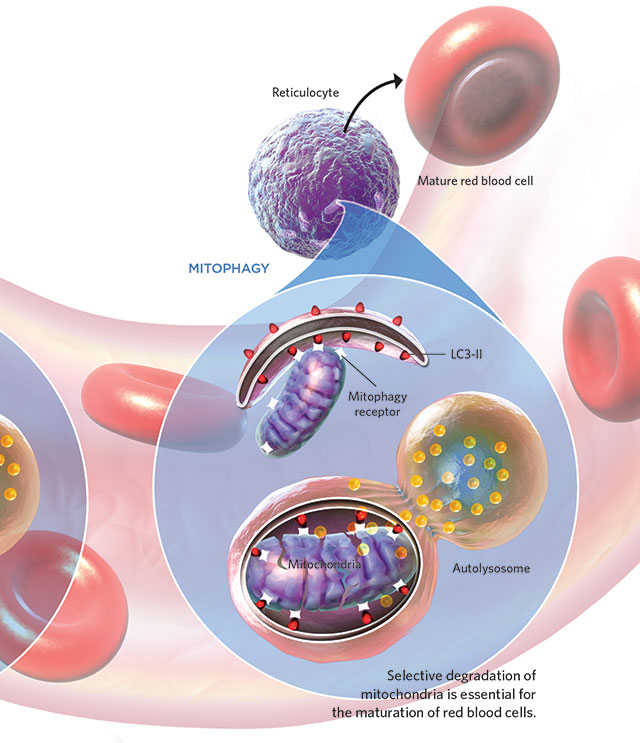In contrast to nonselective autophagy, which digests various cellular cargos randomly, selective versions of this process can target specific molecules, organelles, or even whole organisms for degradation. For example, during the maturation of oxygen-transporting red blood cells called erythrocytes, a selective form of autophagy known as mitophagy eliminates most mitochondria from precursor cells called reticulocytes. Another type of selective autophagy, called xenophagy, involves the targeted digestion of bacterial pathogens.
 © N.R.FULLER, SAYO-ART LLC
© N.R.FULLER, SAYO-ART LLC
 © N.R.FULLER, SAYO-ART LLC
© N.R.FULLER, SAYO-ART LLC
Read the full story.
Correction (March 2): The author listed on the original online version of this article was incorrect. The byline is now fixed. The Scientist regrets the error.
Interested in reading more?




